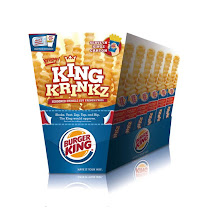
Salt Shaker photo by Michael Connors
No one really needs the results of the latest survey on salt in the diet (this one from China) showing lowered blood pressure and even more supple artery walls. We know too much salt is bad.
Some estimates show Americans take in up to 80% of their sodium from processed foods, so not surprisingly, pressure is building on food marketers and restaurant chains to lower sodium, even if we consumers don't want to eat low-sodium foods. In Europe, several governments are forcing food manufacturers to cut salt levels, first by "advising" them, but threatening new laws, too. The adverse health consequences of too much salt have been thoroughly documented, including high blood pressure (hypertension), heart attack and stroke. It's not surprising The Center for Science in the Public Interest (CSPI) the American Medical Association have petitioned the Food and Drug Administration to change the rating of salt from GRAS (Generally Recognized As Safe). The FDA held a hearing in September 2007 on changing the GRAS status of salt, but no action has yet been taken.
Americans currently consume about 10 grams of salt per person per day– 2/3 above the maximum of 6 grams recommended by US government guidelines, and are using 50% more salt than 30 years ago, with a corresponding rise in high blood pressure. Doctors and scientists note that African-Americans are particularly prone to hypertension from a greater-than-average vulnerability to the negative influences of sodium. Medical groups claim that 250,000 fewer cases of heart disease (with a reduction of 200,000 deaths) could be achieved by a one-gram reduction in salt intake. A cut of 6 grams/day would net out at 1.4MM fewer cases of heart disease and 1.1MM fewer deaths.
While food manufacturers have sought ways to cut sodium, current methods rely mostly on eliminating salt, resulting in bland and unappetizing fare consumers don't want to purchase or consume. Northbrook, IL-based Bell Flavors and Fragrances now claims to have developed a new sodium-reducing flavor technology for meats, snacks, condiments and soups called ReduxSo that cuts salt up to 50% in processed foods. Available in both liquid and powder form, ReduxSo uses potassium chloride, a familiar compound, but which previously proved unusable in salt reduction strategies because of its metallic aftertaste. Bell employs flavor maskers to hide the taste, and maintains a "salty" profile that satisfies taste buds and retains the preservative benefits of salt in foods.
Besides Bell, Redpoint Bio Corporation has developed a flavor system for masking potassium chloride's bitterness, but which is being marketed as a masker, not a salt replacement measure. Other products for reducing salt are SaltTrim by Wild Flavors, Inc. and Swiss-based Jungbunzlauer's sub4salt. And flavor giant Givaudan is working on sensory studies to find flavors that mimic ones preferred by consumers, but without the sodium or salt content.
The reasons for salt's deleterious effects are unclear . The Chinese study referenced above focused on the enzyme called nitric oxide synthase (NOS) which produces nitric oxide (NO), a molecule used by the lining of blood vessels (endothelial cells) to signal surrounding muscles to relax. This improves blood flow and reduces blood pressure. In addition to its role in improving flavor and as a preservative, a new study claims to show salt also is a mood elevator. Tests on rats deprived of sodium showed them listless and avoiding pleasurable activities they normally engaged in such as watching sports on TV—
Sorry, just checking to see if you’re paying attention.
Scientists say the drop-off in activity is equivalent to depression in humans, and may be one reason why patients with hypertension cannot stay away from salt even at the risk of heart attacks, stroke and death spelled out to them by their doctors.
Over ¾ of the salt in the average American diet comes from processed foods, and CSPI claims the average sodium content of 528 packaged & restaurant foods has remained essentially the same for the past 3 years. Companies are feeling the encroaching pressure of government regulation on salt, and find its aftertaste no longer to their liking: Campbell Soup has recently declared it will reduce sodium levels in its soups. They will switch to sea salt in the flagship tomato soup (which is lower in sodium than table salt), and will effect an additional 15% reduction in 25 Healthy Request soups to 410mg sodium (1.03g salt) and 6 V8 soups.
Reducing salt in processed foods involves both challenges to flavor and safety, since salt is also an important preservative option. The trend is towards reducing sodium levels according to a science policy paper entitled Sodium and Salt: A Guide for Consumers, Policymakers and the Media published by the Grocery Manufacturers Association (GMA ) that noted more reduced-sodium products on the market. German bakers have been worried the European Government in Brussels would ban or limit sales of their bread over rising concerns on salt, but regulations passed recently were limited to food products making health claims.
At least for the time being.
This entry is reproduced from BSLG's weekly Food Business News. If you'd like to subscribe, or for information about licensing, contact Broad Street Licensing Group (tel. 973-655-0598)
.gif)











No comments:
Post a Comment
Note: Only a member of this blog may post a comment.